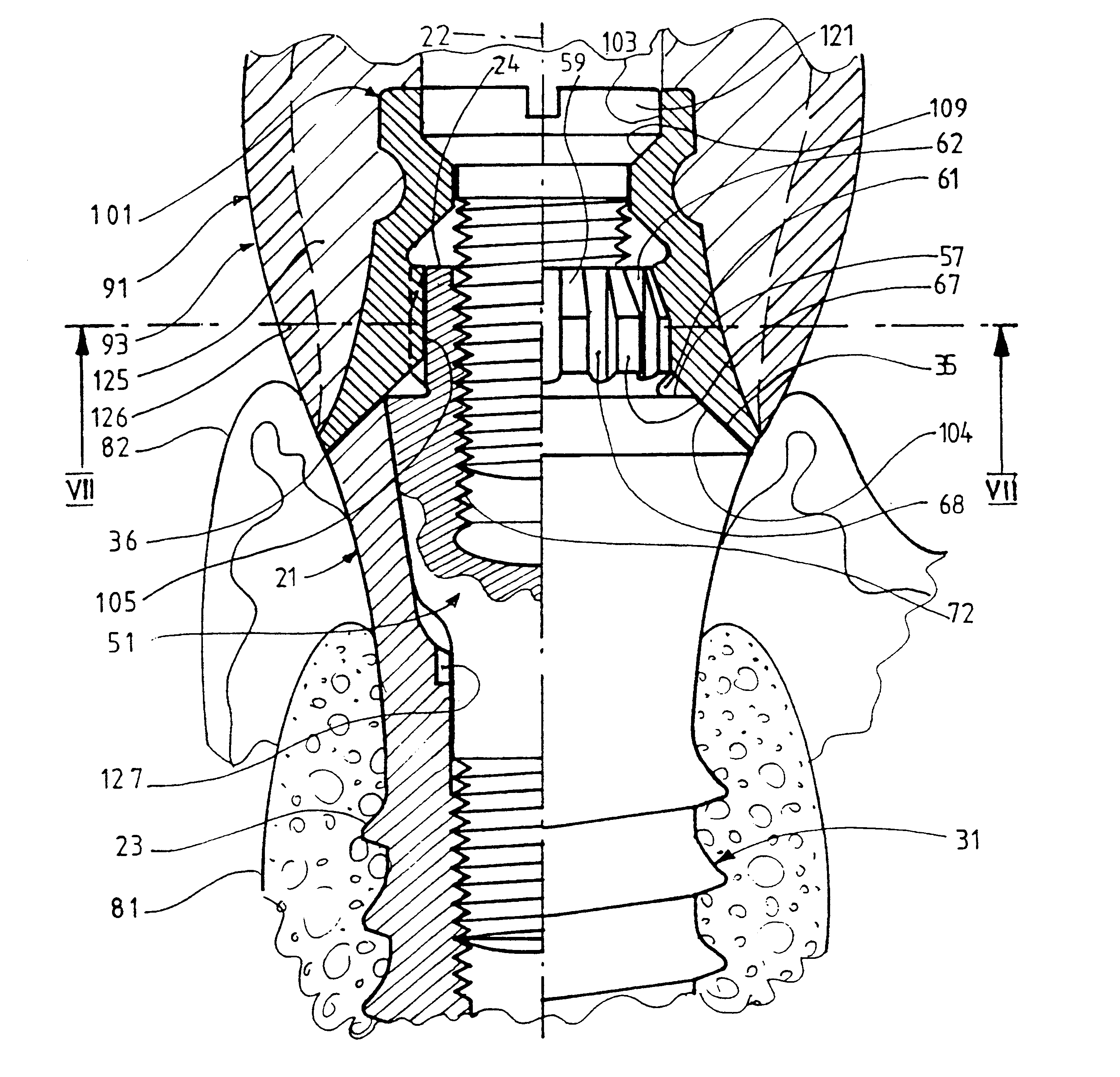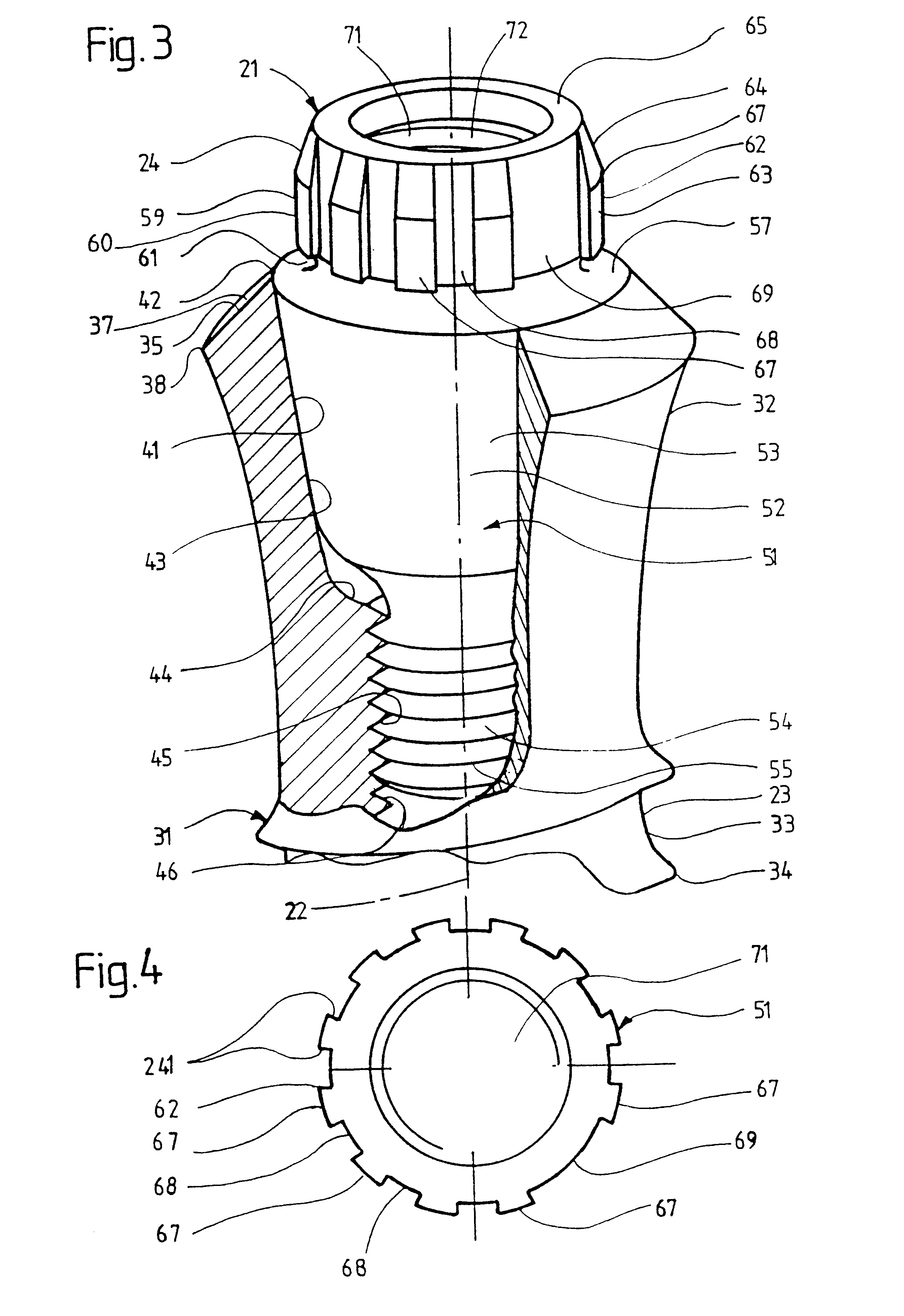Support for sustaining and/or forming a dental prosthesis
a technology for supporting and/or forming dental prostheses, applied in dental prostheses, medical science, dentistry, etc., can solve the problems of small rotational or swiveling movements of the cap relative to the support, inability to design a cap, and inability to support the patien
- Summary
- Abstract
- Description
- Claims
- Application Information
AI Technical Summary
Benefits of technology
Problems solved by technology
Method used
Image
Examples
Embodiment Construction
The support 21 shown in FIG. 3 is generally rotationally symmetrical about an axis 22 and at the bottom has an anchoring part 23 intended for anchoring in a bone of an upper or lower jaw and a head part 24 for projecting out of the bone. Support 21 has two originally separate elongate one-piece metal parts, namely an implant 31 and a secondary part 51 removably attachable thereto.
Implant 31 has an upper end section 32 that tapers downward. It is abutted at the bottom by a generally cylindrical section 33 which is provided for example with an external thread 34 and forms at least the largest part of anchoring part 23 of the support. The lower end of section 33, not visible in FIG. 3, forms the first free end of the total support. Implant 31 has an implant shoulder 35 at the upper end. This shoulder has an annular conical flat shoulder surface 37 that fully surrounds the axis and tapers upward away from the anchoring part. Head part 24 in axial projection is enclosed by at least the o...
PUM
 Login to View More
Login to View More Abstract
Description
Claims
Application Information
 Login to View More
Login to View More - R&D
- Intellectual Property
- Life Sciences
- Materials
- Tech Scout
- Unparalleled Data Quality
- Higher Quality Content
- 60% Fewer Hallucinations
Browse by: Latest US Patents, China's latest patents, Technical Efficacy Thesaurus, Application Domain, Technology Topic, Popular Technical Reports.
© 2025 PatSnap. All rights reserved.Legal|Privacy policy|Modern Slavery Act Transparency Statement|Sitemap|About US| Contact US: help@patsnap.com



